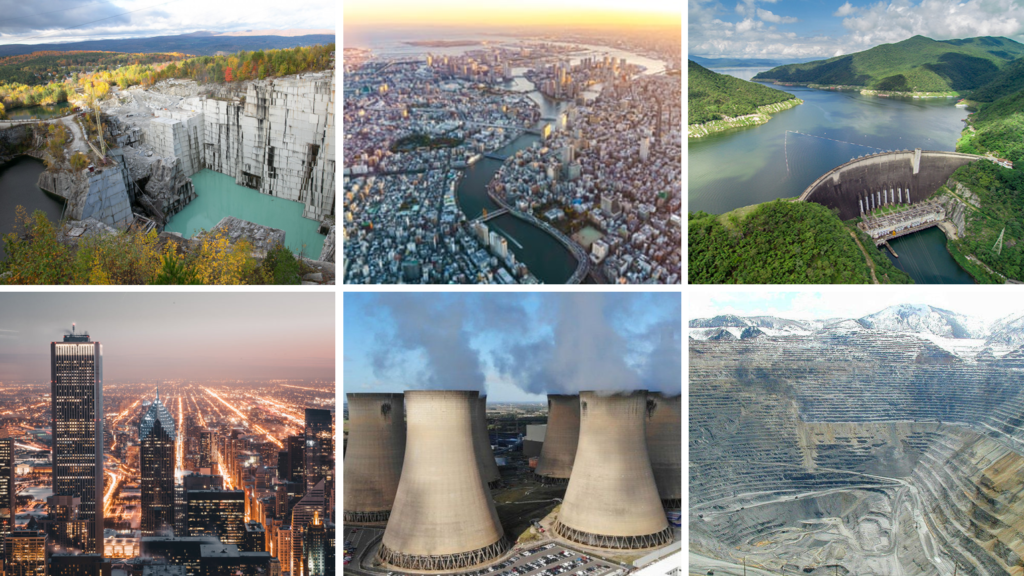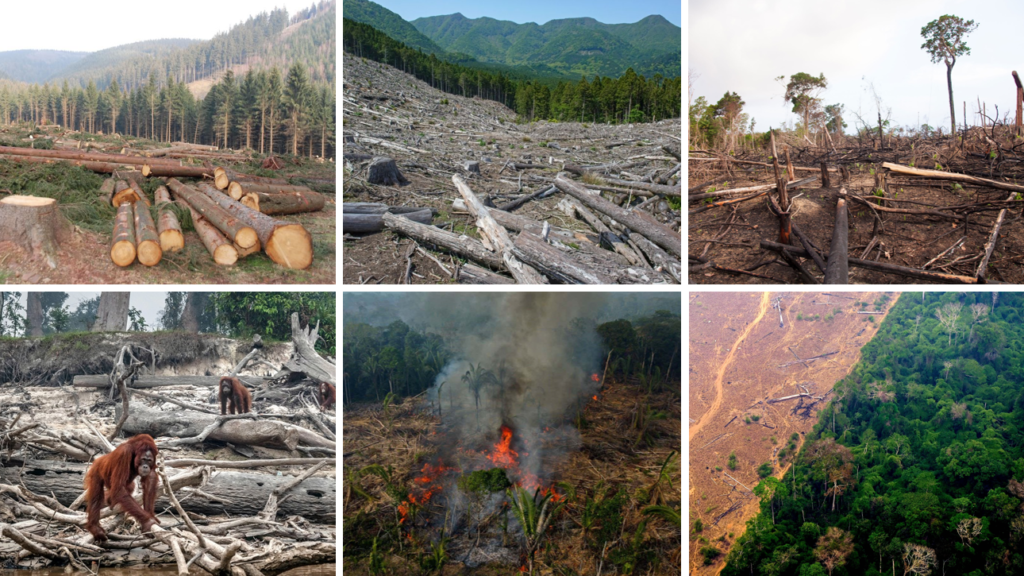Mood Board

What is Anthropocene?
Anthropocene is a word which is used to describe the period of time in which human activity has greatly impacted the Earth’s climate and ecosystems.
Anthropocene in photography often explores issues such as:
- Extreme Human-altered environments such as quarries, mines, dams, power stations and cities

- Deforestation

- Plastic waste and landfill

- Traffic/Over population

- Modern ruins

- Farms with plastic covering

Anthropocene photography is a term which was first used in 2015 within a blog written by the photographer Kristin Wilson (Link to Blog). In this blog post, Kristin describes that Anthropocene is a vague concept and can be used to describe photos showing negative impacts of humans on the environment. Overall, the purpose of Anthropocene in photography is investigating and understanding the impacts which human’s are having on Earth and bringing attention to the fact that things need to change now in order to save our future.
I personally think that, by documenting global issues, photographers are helping in many ways by spreading awareness and promoting taking action, however, I also think that they apart of the problem themselves. I think this because the majority of photographers travel for their work and print their images, which will heighten their carbon footprint. In addition, the equipment used by photographers is not very sustainable as, for example, cameras contain various resources which are being depleted and can contaminate soil and water. Altogether, if photographers are wanting to make a change for the environment, they should be more considerate of the impacts they are causing through their job and contemplate using more sustainable equipment and methods.
Finally, it is very controversial as to whether Anthropocene images are beautiful or ugly. In my opinion, I think that it depends on the photograph. For example, an image may appear beautiful but the message behind it is not so much. The case could also be that the image is ugly to show the viewers the impacts we are having on Earth so that maybe people will act to make a change.
Artist References
Edward Burtynsky

Edward Burtynsky is a photographer, born in 1955 in Ontario, who is best known for his images of nature altered by industry. Burtynsky grew up near a General Motors plant, which sparked his interest for photographing the impact of human industry on the planet. He was also greatly inspired to pursue photography by photographers such as Ansel Adams, Edward Weston and Eadweard Muybridge. Edward Burtynsky studied Photography/Media studies at Toronto Metropolitan University and has since received his BAA (1982), an Alumni Achievement Award (2004) and an Honorary Doctorate (2007). He is still involved with this University community and sits on the board of directors for The Image Centre. Throughout Burtynsky’s career, he has gained various awards such as the TED prize (Technology, Entertainment, Design) and he has had his work displayed in over 80 museums worldwide including the Tate Modern in London and the Metropolitan Museum of Art. Burtynsky displays his images as very large, high-resolution prints as they are more immersive and will really draw the viewer’s attention.
The making of Burtynsky’s photographs often requires the use of technology such as helicopters, drones or even lifts in order for him to get his desired perspectives. This may make it difficult for me to imitate his images as I don’t have access to the same technology.
Photos by Edward Burtynsky:

George Marazakis
George Marazakis is a photographer who was born in 1976 in Crete Island, Greece, where he lives with his Wife and Son. He studied Mechanical Engineering and he works at the Municipality of Heraklion (Administrative Centre of Crete). Marazakis began his career in photography in 2010 after having a knee injury, causing him to stop playing basketball and having to walk more as exercise, and he uses a Canon 60d and a small Samsung nx1000. He mainly does street photography and he describes his photos as candid deceptive. Other than street photography, George Marazakis has also produced a series of photographs titled ‘A Cure for Anthropocene‘. This series is featured on Lens Culture and displays his images, along with an essay written by Cat Lachowskyj. Within this essay, it is said that George Marazakis stated ‘While I was photographing the landscapes affected by human interactions in the middle of natural spaces, the topography started looking like a body to me – like something with the early stages of psoriasis on its skin‘. He then explained that ‘we can say that we are a disease attacking our own organism, just like an immune system can attack its own body‘. I personally think that this is a really powerful way to think about the impacts in which we are making on our ecosystems and it is something which I am inspired to imitate in my own photographs.
Photos by George Marazakis:

A Comparison of these Photographers
At first glance, these photographers have a very similar style of work in terms of photographing the impacts of humans to the environment, however, their images also have many differences. For example, Burtynsky photographs more extremely impacted landscapes, often from an aerial view, however Marazakis’ landscapes are more minimally affected and the majority of them have been taken on ground. Burtynsky’s images also appear higher resolution to Marazakis’ and are more varied in colour. Overall, it will be much more simple to imitate George Marazkis’ photographs as I won’t need to use expensive technology and I can find many more similar landscapes on the Island to his.
